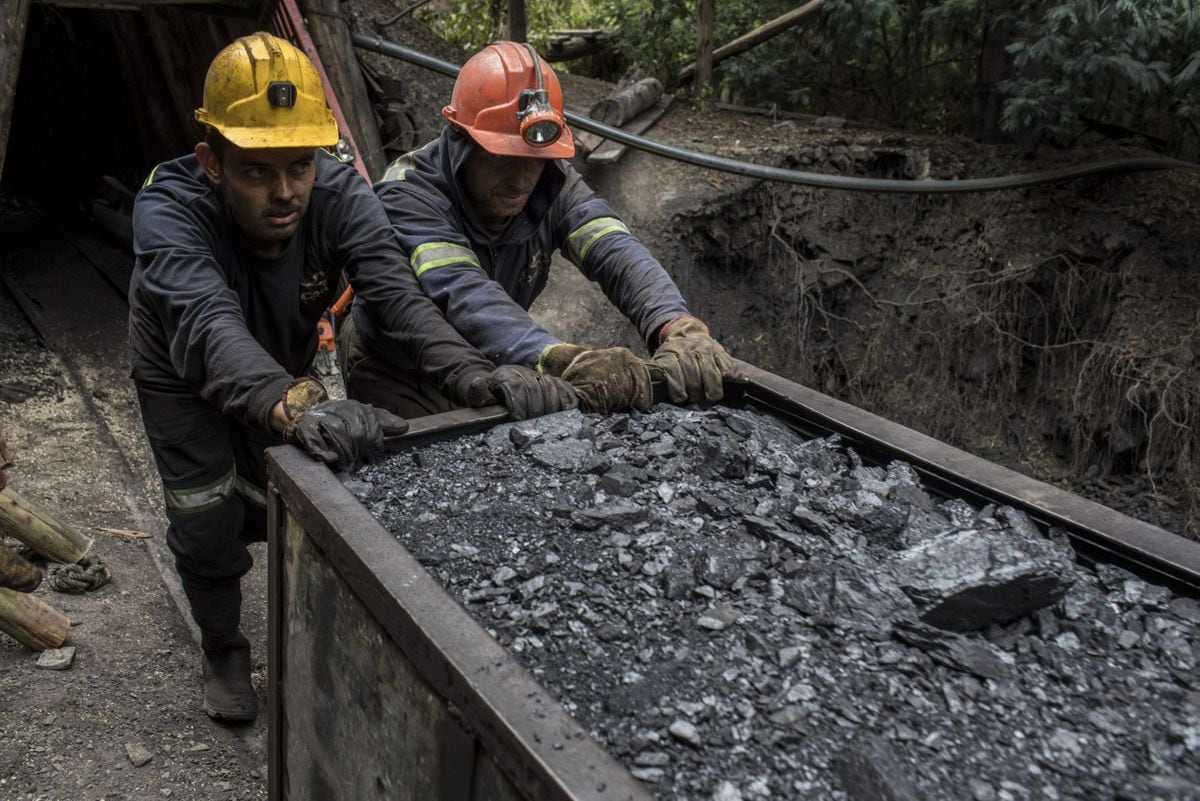File image of two miners pushing a wagon of coal out of a mine in Cucunuba, Colombia. Nicolo Filippo Rosso (Bloomberg)
EL PAÍS offers the América Futura section open for its daily and global informative contribution on sustainable development.
If you want to support our journalism, subscribe
here
.
Saying goodbye to coal in Colombia has been one of the most central issues - and debated - during the Government of Gustavo Petro.
It is a plot that is reborn from time to time.
Either because of the intermittent statements by the Minister of Mines and Energy about putting an end to its exploration, or because, as happened at the beginning of March in Sutatausa, a municipality in Cundinamarca, the explosion of a mine and the death of its workers recalled the industry risks.
In addition, a recent report from the Global Energy Monitor
organization has just been added to the discussion,
which indicates that, if the mines that Colombia has for now only on paper are built or others that have closed are opened, methane emissions of the sector, one of the gases that most promote climate change, would double.
The accounts are like that.
In 2021, Colombia produced around 60 million tons of coal, mostly generated by the Cerrejón (La Guajira), Drummond and Prodeco mines (both in the Cesar department).
And the sector, according to the latest projections made in 2020 by the United States Environmental Protection Agency, would be emitting around 344,000 tons of methane, among other similar figures calculated by the Colombian government (219,000 tons) and the same Global Energy tracker
. Monitor
, which estimated them at 239,000 tons for 2021.
But the panorama would not stay still.
The organization's investigation found that there are plans to build new coal mines.
"At
Global Energy Monitor
we have an atlas of mines globally," says Gregor Clark, co-author of the report and manager of the Energy Portal for Latin America.
"Every year we review the databases and enrich them again with various sources, such as the National Mining Agency itself or newspaper articles."
The then presidential candidate Gustavo Petro, enters the El Pino coal mine, together with the workers of the municipality of Paipa, on June 6, 2022.NATHALIA ANGARITA
Thus they found that there are three large new mines that are being cooked up in Colombia: the San Juan mine (between La Guajira and Cesar) and Cañaverales and Papayal (both in La Guajira).
All owned by the Turkish multinational company Yildirim, which operates in the country through the Colombian subsidiary
Best Coal Company (BCC).
Although the production estimates have been changed on several occasions by the company or vary based on the documentation that is verified,
Global Energy Monitor
indicates that the first would have an average production of more than 28 million tons, the second more than 2.5 and the third more than 1.73.
Only with these three mines, which have not yet received the environmental license, "the annual national production could increase more than 32 million tons, more than 50% above the production of Colombia in 2021," says the report.
Added to this is the Prodeco mine relinquishment scenario.
In September 2021, the National Mining Agency accepted that the company renounce the titles of the La Jagua and Calenturitas mines, in Cesar.
But despite the fact that the mines currently have their operations closed, there was an intention on the part of the previous government, that of Iván Duque, to seek new operators for these mines during 2022. Although the process is suspended, the Global Energy Monitor
report
does explored what would happen if these coal mines resumed again.
“The reactivation of the Prodeco mines could add another 15 or 12 million tons per year to the annual coal production in Colombia, which would result in annual production figures that could equal or exceed the maximum levels reached by Colombia in 2017” , they assure.
An excavator moves coal in a mine in Barrancas.Bloomberg (via Getty Images)
Translating this into tons of methane emitted – after making technical calculations that include factors such as coal quality or mine depth –
Global Energy Monitor
concluded that the coal mining sector in Colombia, with the three new mines, would emit between 54,000 and 161,000 tons of methane per year.
And if a reactivation of Prodeco is added, it would be 55,000 more new tons per year.
"The country's mining sector could emit an additional 216,000 tons of methane per year, effectively doubling the existing emissions from the sector that the country itself reported publicly to the United Nations Framework Convention on Climate Change," they say.
This, Clark recalls, must be seen in the context of climate change, in view of which Colombia has promised to reduce its greenhouse gas emissions by 51% by 2030 and be carbon neutral by 2050. Bearing in mind that the mines have the intention to start operating between 2024 and 2026 would imply taking a route more distant from its environmental commitments.
This, without taking into account that the International Energy Agency has warned of the need to reduce methane emissions from coal mines worldwide by 75%.

